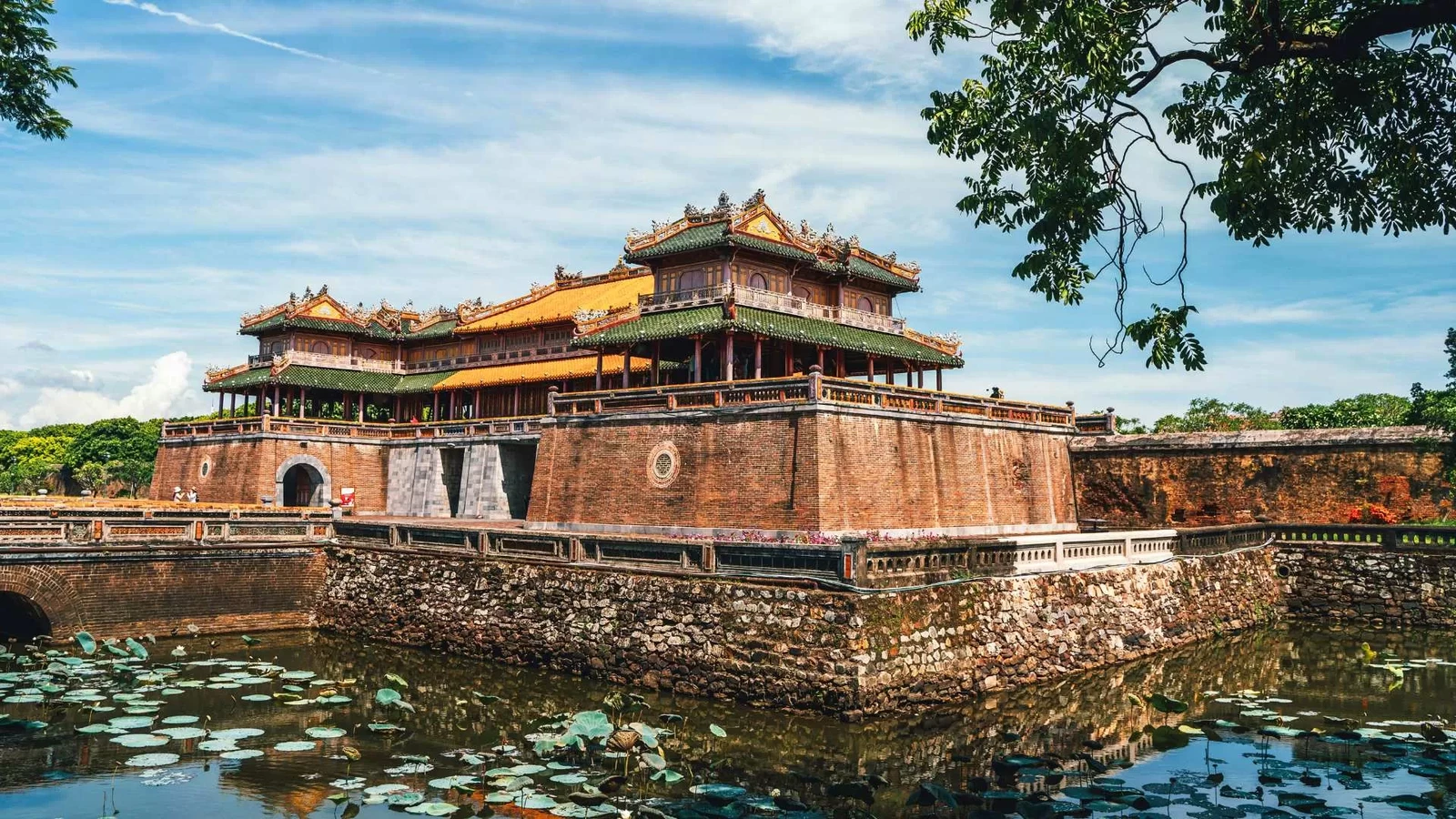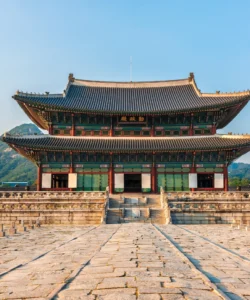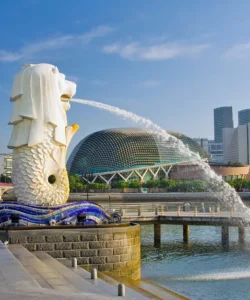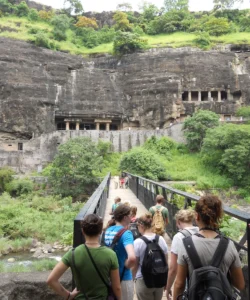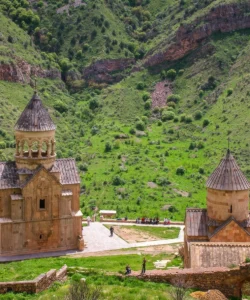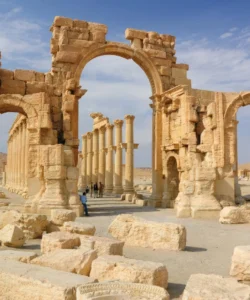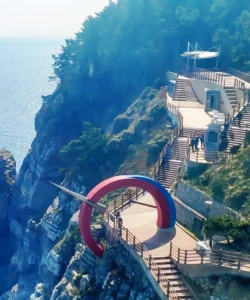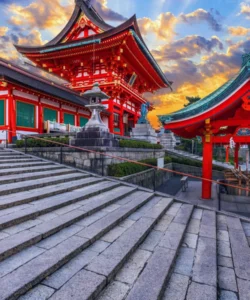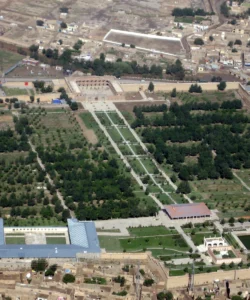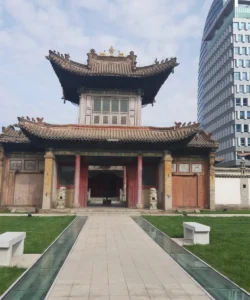Hue Imperial City (Kinh thành Huế) is a sprawling walled citadel and the former imperial capital of Vietnam, serving as the seat of the Nguyễn Dynasty from 1802 to 1945. Located on the banks of the Perfume River (Sông Hương) in central Vietnam, it is a magnificent testament to Vietnam’s last imperial dynasty, showcasing a rich blend of traditional Vietnamese architecture, feng shui principles, and royal grandeur. Despite suffering significant damage during various wars, particularly the Tet Offensive in 1968, the Imperial City remains a UNESCO World Heritage site and a powerful symbol of Vietnam’s rich historical and cultural heritage.
![]()
Name: Hue Imperial City (Kinh thành Huế; 京城 Huế). It is also commonly referred to as the Hue Citadel.
Address: The Imperial City is a large complex. Its main entrance, Ngo Mon Gate, is located at Cửa Ngọ Môn, Tp. Huế, Thừa Thiên Huế, Vietnam.
How to get there:
Hue Imperial City is centrally located in Hue and easily accessible:
- From Hue City Center: The Imperial City is on the north bank of the Perfume River, just across from the main tourist area on the south bank.
- Walking: If staying nearby on the north bank, or a pleasant walk across Truong Tien Bridge from the south bank.
- Cyclo (Rickshaw): A popular and charming way to experience Hue, pedicabs can take you directly to the Imperial City gates.
- Taxi/Grab (Ride-hailing): Readily available throughout Hue.
- Boat Trip: Some boat tours on the Perfume River combine a visit to the Imperial City (docking nearby) with other sites like Thien Mu Pagoda.
- From Phu Bai International Airport (HUI): Taxis, Grab cars, or airport shuttle buses can take you directly to your accommodation in Hue, from where you can then easily reach the Imperial City. The airport is about 15 km (9 miles) south of Hue.
- From Da Nang/Hoi An:
- Train: A highly scenic train journey (the “Reunification Express”) connects Da Nang to Hue, winding through coastal mountains.
- Bus/Private Car: Buses and private car transfers are common, often via the Hai Van Pass, offering stunning views.
Landscape and Architecture:
The Hue Imperial City is a vast, meticulously planned complex, designed according to strict feng shui principles and traditional Vietnamese court architecture:
- Massive Fortified Walls: The Imperial City is encircled by a formidable square-shaped wall (tứ giác thành) measuring approximately 10 kilometers (6.2 miles) in perimeter, 6 meters high, and 2.5 meters thick. This wall is protected by a wide moat (Hộ Thành Hà) and 10 fortified gates.
- The Citadel (Kinh Thanh): This outer layer contained residences for various officials, military barracks, and other public buildings.
- The Imperial City (Hoàng Thành): Within the Citadel is a second, smaller, but equally fortified enclosure, the Imperial City itself. This area housed the most important state offices, temples, and the Forbidden Purple City.
- The Forbidden Purple City (Tử Cấm Thành): This innermost and most sacred enclosure was reserved exclusively for the Emperor, his concubines, and closest eunuchs. It contained the Emperor’s private residences, reception halls, and other personal facilities. Much of this area was severely damaged in 1968.
- Ngo Mon Gate (Meridian Gate): The magnificent main entrance to the Imperial City, used exclusively by the Emperor. It features five pathways, with the central one reserved for the Emperor. Above the gate is the Five Phoenix Pavilion (Lau Ngu Phung).
- Thai Hoa Palace (Palace of Supreme Harmony): The grandest and most important building, where the Emperor’s coronation ceremonies, official receptions, and important court meetings took place. Its ornate gilded columns and double-tiered roof are iconic.
- Theatres and Temples: The complex includes various other structures such as the Royal Library, the Royal Theatre (Duyet Thi Duong), and numerous ancestral temples (e.g., The Mieu Temple, Hien Lam Cac pavilion).
- Lakes and Gardens: Beautifully landscaped gardens, artificial lakes, and decorative bridges are integrated throughout the complex, adhering to feng shui principles for harmony and prosperity.
- Traditional Vietnamese Woodwork: Much of the architecture features intricate wooden structures, often lacquered in red and gold, with delicate carvings and traditional tile roofs.
- Restoration Efforts: While substantial parts were damaged, extensive and ongoing restoration efforts (many aided by UNESCO) are bringing many of the structures back to their former glory, using traditional techniques and materials.
What makes it famous:
Hue Imperial City is famous for:
- Last Imperial Capital of Vietnam: It served as the capital of Vietnam under the Nguyễn Dynasty for 143 years, making it the central hub of Vietnamese power, culture, and art for a significant period.
- UNESCO World Heritage Site: Inscribed in 1993, recognized for its outstanding example of a feudal capital, built according to traditional Vietnamese geomancy, showcasing a unique blend of Eastern and Western influences (though primarily Eastern).
- Masterpiece of Vietnamese Architecture and Feng Shui: Its meticulous layout, the strategic placement of its buildings, and the overall design are deeply rooted in Vietnamese geomancy (feng shui) and traditional architectural principles, designed for cosmic harmony and imperial legitimacy.
- Symbol of Vietnamese Resilience: Despite suffering immense damage during the Vietnam War (particularly the 1968 Tet Offensive), its ongoing and dedicated restoration symbolizes Vietnam’s commitment to preserving its national heritage.
- Imperial Grandeur: It offers a glimpse into the opulent lifestyle and elaborate rituals of Vietnam’s last imperial court.
- Perfume River Setting: Its location on the scenic Perfume River adds to its charm and historical significance, as the river was vital for transport and imperial ceremonies.
Differences from some other wonders:
Hue Imperial City stands out from other historical cities and imperial complexes in several key ways:
- Distinct Vietnamese Imperial Style: While sharing influences with Chinese imperial architecture (like the Forbidden City), Hue Imperial City developed its own distinct Vietnamese imperial style. This includes unique roof designs, specific color palettes, and a slightly more intimate scale compared to Beijing’s Forbidden City, while maintaining grandeur.
- Deep Integration of Feng Shui: The entire complex, from its overall layout to the orientation of individual buildings and water features, was meticulously planned and executed according to strict Vietnamese feng shui principles. This deep philosophical integration is more pronounced than in many other historical capitals.
- War Damage and Restoration Narrative: Unlike perfectly preserved historical sites or ruins that have remained largely untouched, Hue Imperial City’s story is deeply intertwined with its heavy damage during the Vietnam War and the subsequent, extensive, and ongoing international restoration efforts. This narrative of destruction, survival, and rebirth is a powerful and unique aspect of its identity.
- Coastal Plain Location: Unlike some imperial capitals built in inland basins, Hue is located on a coastal plain with direct river access to the sea, influencing its strategic importance and its architectural relationship with water (e.g., the Perfume River).
- Final Imperial Dynasty: As the capital of Vietnam’s last and relatively recent imperial dynasty, it offers a more tangible and often better-documented connection to imperial power and traditions that extended into the 20th century, unlike much older and more ancient imperial sites.
In essence, Hue Imperial City is more than a collection of ancient buildings; it is a profound historical tapestry, a living testament to Vietnam’s imperial past, its resilience in the face of conflict, and a magnificent example of a culture deeply harmonized with its environment through timeless architectural and philosophical principles.
